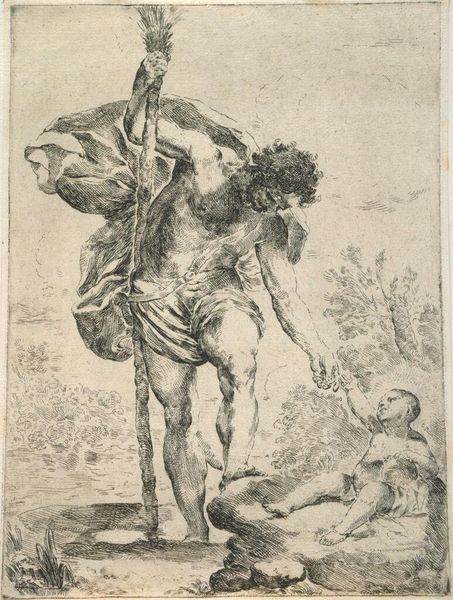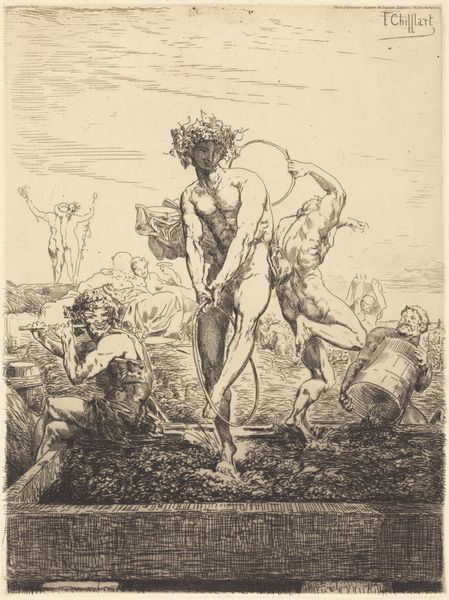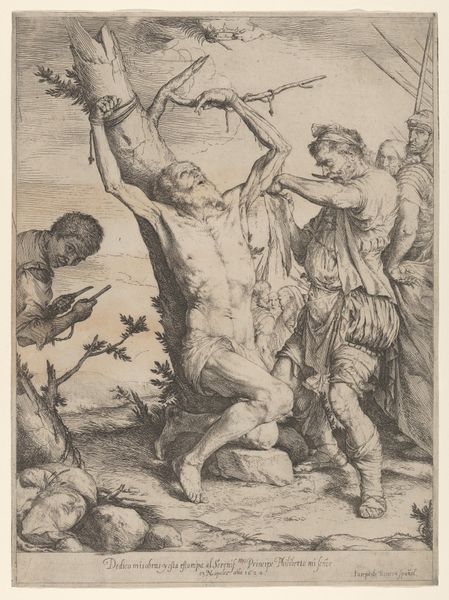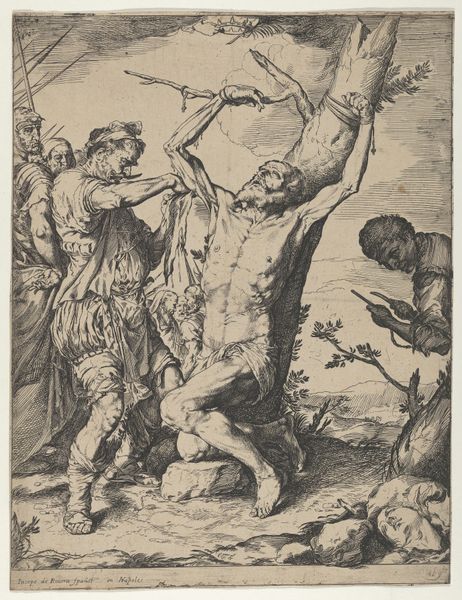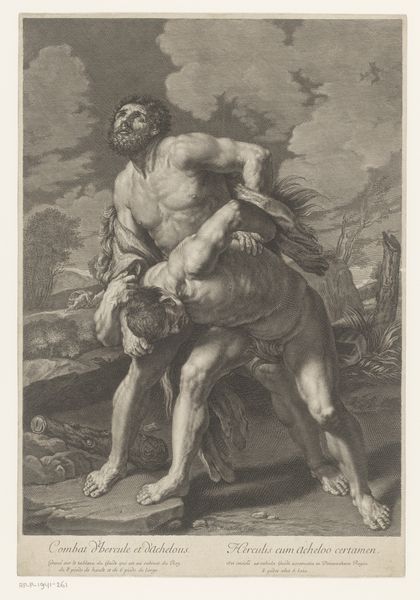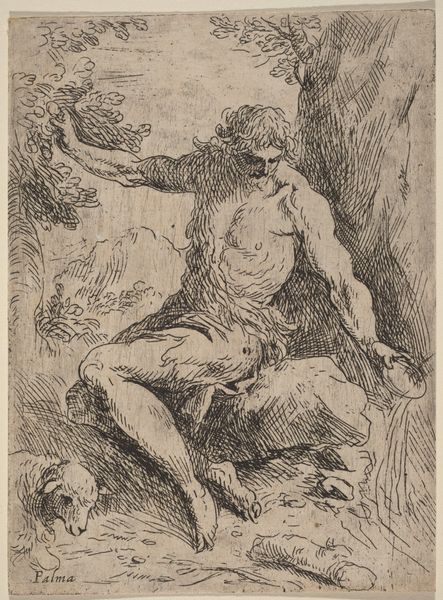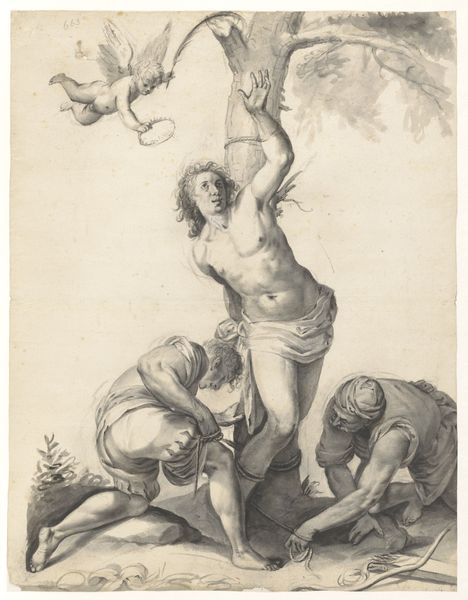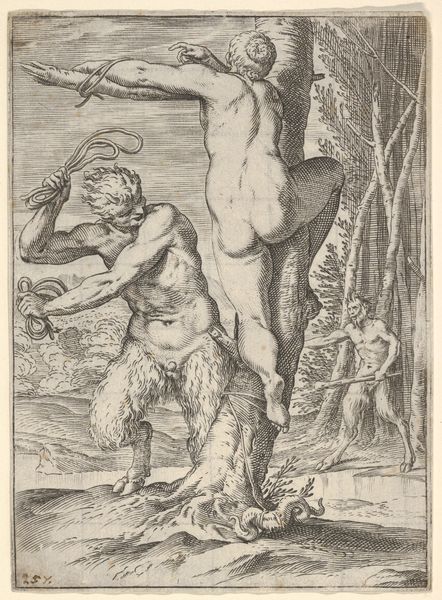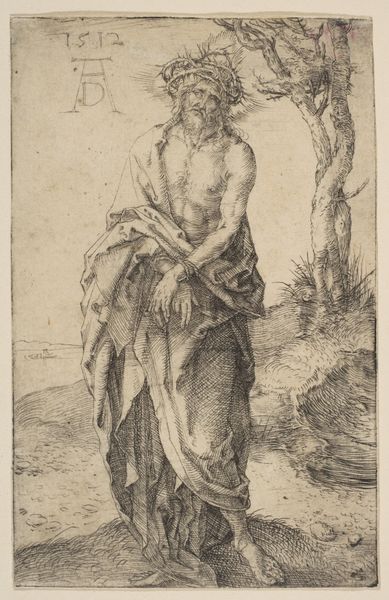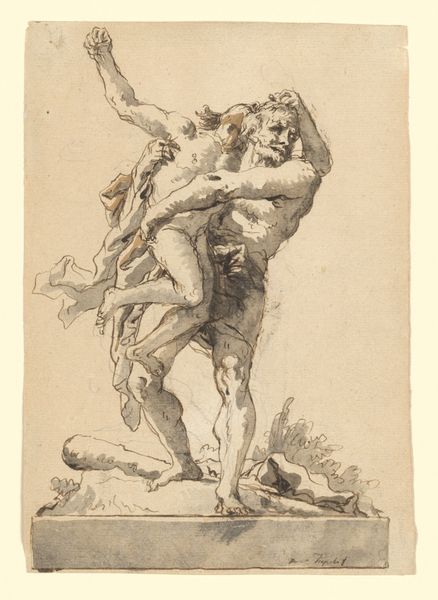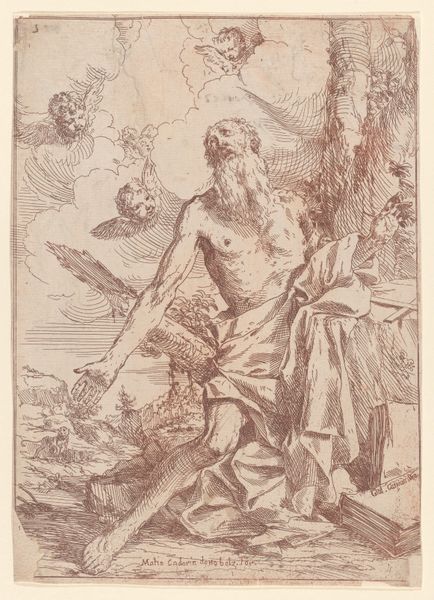
Saint Christopher Giving His Hand to the Infant Jesus c. 1650s
0:00
0:00
print, engraving
#
baroque
# print
#
figuration
#
history-painting
#
engraving
Dimensions: sheet (trimmed within plate mark): 24.7 x 18.5 cm (9 3/4 x 7 5/16 in.)
Copyright: National Gallery of Art: CC0 1.0
Editor: This is "Saint Christopher Giving His Hand to the Infant Jesus," an engraving made in the 1650s by Francesco Amato. The rendering feels so dynamic; the muscular figure of St. Christopher is about to assist this smaller, luminous baby... what strikes you when you look at it? Curator: What grabs me is the visual narrative being circulated. St. Christopher, the giant, and Jesus, the child—it's a fascinating study in power dynamics rendered for a very specific viewership. Prints like these were widely distributed; consider how this imagery, presenting strength serving divine authority, influenced social order and piety in the 17th century. Editor: So you are thinking of who was the print made for and how was it used at the time? Curator: Exactly. The accessibility of prints meant these images shaped popular belief. Notice the baroque style—the theatricality, the drama. But it's not merely aesthetic; it reinforces the message. This Saint Christopher isn't just helpful; he's monumental, participating in something larger than himself, which in return reinforces faith and social cohesion. Does this resonate with your own thoughts on the piece? Editor: I initially just saw the religious narrative, but thinking about it now, the scale of Saint Christopher really communicates the Church's strength and reach… almost like a tool for public image. Curator: Precisely. The power of art lies not just in the image itself, but its active role in society. Editor: This has completely shifted how I view this print; it is not only a religious representation, but it's actually doing social work, in a way. Curator: And those prints kept moving and accumulating meaning as they moved between hands, locations, and eras, still shaping culture today.
Comments
No comments
Be the first to comment and join the conversation on the ultimate creative platform.
